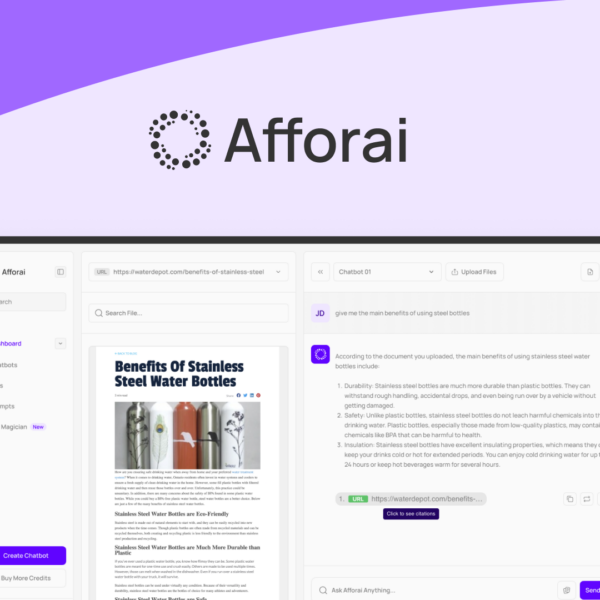A software website enhances business efficiency by automating processes, improving customer experiences, and providing valuable data insights. To effectively implement one, avoid common mistakes, prioritize user training, and continuously seek feedback for optimization.
A software website serves as a crucial tool for businesses to optimize their operations, enhance user experience, and drive growth. By integrating robust software solutions, companies can streamline processes, manage tasks more efficiently, and improve overall productivity. In this post, we will delve into the enormous advantages of having a software website, from understanding its core benefits to implementing best practices that ensure its successful integration into your business model.
Benefits of a Software Website
A software website offers a range of benefits that can significantly transform the way businesses operate. By adopting a software website, companies can enhance efficiency, improve customer engagement, and simplify many organizational tasks.
Improved Operational Efficiency
One of the main advantages of a software website is the improved operational efficiency it brings. By automating mundane tasks, businesses can save time and reduce the chances of human error. This allows employees to focus on higher-level responsibilities that contribute more directly to the company’s goals.
Enhanced Customer Experience
Another crucial benefit is the ability to enhance the customer experience. A well-designed software website can provide users with seamless navigation and personalized interactions. Features like chatbots and customer support tools allow businesses to engage with clients in real-time, responding to inquiries and solving problems quickly.
Data Management and Analytics
Software websites come equipped with data management tools that enable businesses to gather, analyze, and act on their data effectively. This insight into customer behavior and operational performance can help inform decisions, improve marketing strategies, and optimize resource allocation.
Scalability
As businesses grow, their needs evolve. A software website can be scaled easily to accommodate changing demands. Whether it’s increasing user capacity or adding new features, a software website allows companies to adapt without significant infrastructure changes.
Cost-Effective Solutions
Lastly, implementing a software website can be a cost-effective solution. By reducing manual processes and improving efficiency, businesses can lower operational costs over time. Additionally, the integration of various tools into a single platform can minimize the need for multiple software subscriptions.
Key Features to Look For

When creating a software website, it’s essential to consider several key features that can enhance functionality and user experience. These features ensure that the website meets business requirements and supports customer needs effectively.
User-Friendly Interface
A user-friendly interface is vital for any software website. It should be intuitive and easy to navigate, allowing users to find information quickly. Clear menus, logical layouts, and accessible design elements play a significant role in facilitating a smooth user experience.
Mobile Responsiveness
With an increasing number of users accessing websites through mobile devices, having a mobile-responsive design is crucial. A software website should adjust seamlessly to different screen sizes. This adaptability ensures that all users have a consistent experience, regardless of the device they use.
Integration Capabilities
Your software website should have the ability to integrate with other tools and platforms. This feature allows businesses to streamline operations by connecting various applications. Integration can enhance functionalities, such as linking customer relationship management (CRM) systems, email marketing services, or payment gateways directly into the website.
Security Features
Security is paramount for any software website, especially when handling sensitive user data. Implementing SSL certificates, data encryption, and secure login protocols can help protect users’ information. Regular security updates and compliance with data protection regulations should also be prioritized.
Analytics and Reporting
Integrating analytics and reporting features into your software website provides valuable insights. These tools should track user behavior, website performance, and conversion rates. Businesses can use this information to make informed decisions, optimize content, and enhance overall user experience.
How to Choose the Right Software
Choosing the right software for your business is crucial for enhancing productivity and achieving desired outcomes. Here are some key steps to guide you in selecting the most suitable software solution.
Assess Your Business Needs
The first step is to conduct a thorough analysis of your business needs. Consider the specific problems you aim to solve with the software. Gather input from team members about their challenges and what functionalities would help them the most. A clear understanding of your needs will help narrow down your options.
Research Available Options
Once you have a clear idea of your requirements, research available software options. Look for reviews, comparisons, and ratings from reliable sources. Make a list of software that meets your criteria and fits within your budget. It’s essential to consider both popular solutions and niche software that might cater specifically to your industry.
Evaluate Features and Functionality
Examine the features and functionalities of the software on your shortlist. Ensure it includes essential tools relevant to your business. Check for capabilities like automation processes, reporting features, integration with other systems, and community support. A software with the right features can make a significant difference in your operations.
Consider Scalability
As businesses grow, their software needs often evolve. Ensure that the software you choose can scale with your business. Look for options that offer various pricing tiers, add-on features, or flexible service plans. This scalability will save you from needing to switch platforms in the future as your demands increase.
Test Usability
Before making a final decision, take advantage of free trials or demos. Testing the software allows you to experience its user interface and ease of use firsthand. Involve your team in the testing process to get their feedback. A software that is easy to navigate will help ensure a smooth transition and better adoption within your organization.
Best Practices for Implementation

Implementing a new software solution can be challenging, but adopting best practices can streamline the process and ensure successful integration. Here are some best practices to keep in mind for a successful implementation of your software website.
Involve Stakeholders Early
Engaging key stakeholders from the very beginning is crucial. This includes team members who will use the software, IT professionals, and management. Their input will help identify needs and ensure that the selected software aligns with organizational goals. Early involvement fosters investment in the new system and smoothens the transition.
Develop a Clear Implementation Plan
A well-structured implementation plan outlines every step of the process. It should include timelines, responsibilities, and milestones. Having a clear plan helps streamline the rollout and maintains focus on priorities. Be sure to communicate this plan to all relevant parties to keep everyone on the same page.
Provide Adequate Training
Investing time and resources into training is essential for a successful implementation. Ensure that all users understand how to use the software effectively. Offering comprehensive training sessions, tutorials, and continuous support will increase user confidence and reduce resistance to the new system.
Test Before Full Launch
Before rolling out the software website to all users, conduct thorough testing. This pilot phase allows you to identify and fix any potential issues. Gather feedback from pilot users to make necessary adjustments before full deployment. Testing ensures a smoother experience for the wider organization.
Monitor and Optimize
After implementing the software, continuous monitoring is essential. Analyze usage data and gather user feedback regularly. This insight will help you identify areas for improvement and optimize the system for better performance. Staying proactive in monitoring encourages long-term success and user satisfaction.
Common Mistakes to Avoid
When implementing a software website, avoiding common mistakes can save time and resources. Here are some pitfalls to watch out for during the process.
Neglecting User Training
One of the biggest mistakes is not providing adequate training for users. If employees do not understand how to use the software effectively, it can lead to frustration and a lack of adoption. Make sure to allocate time for comprehensive training sessions and provide ongoing support.
Skipping the Testing Phase
Another common mistake is failing to thoroughly test the software before its launch. Skipping this step can result in unforeseen issues that affect usability and performance. Always conduct testing with a pilot group to identify bugs and gather feedback before full deployment.
Overlooking Change Management
Implementing new software is not just a technical process; it also involves managing change within the organization. Ignoring the human aspect can lead to resistance from staff. Communicate openly about the changes, involve employees in the process, and address their concerns to facilitate a smoother transition.
Choosing the Wrong Software
Selecting software that does not align with your business goals or user needs is a serious mistake. Take time to evaluate different options based on functionality, integrations, and scalability. Proper research and planning are essential to finding the right fit for your organization.
Neglecting to Seek Feedback
After implementation, failing to seek feedback from users can limit the software’s effectiveness. Regularly check in with your team to understand their experiences and identify areas for improvement. This feedback is invaluable for optimizing the software and ensuring its long-term success.
In Summary: Harnessing the Power of a Software Website
Implementing a software website can dramatically enhance your business’s efficiency and productivity. By understanding its benefits, key features, and best practices, you can make informed decisions that drive growth.
Avoiding common mistakes, such as neglecting training or skipping testing, will help ensure a smooth transition. Remember to involve your team and gather feedback to optimize the system continually.
In today’s competitive landscape, leveraging a well-implemented software website can set your business apart and open doors to new opportunities. Embrace this technology to boost your operations and serve your customers better.
FAQ – Frequently Asked Questions about Software Websites
What are the main benefits of having a software website?
A software website can enhance efficiency, improve customer experience, automate processes, and provide valuable data insights.
How do I choose the right software for my business?
Assess your business needs, research available options, evaluate features, consider scalability, and test usability before making a decision.
Why is user training important during implementation?
User training ensures that employees understand how to use the software effectively, which increases adoption rates and reduces frustration.
What common mistakes should I avoid when implementing software?
Avoid neglecting user training, skipping the testing phase, overlooking change management, choosing the wrong software, and failing to seek feedback.
How can I gather feedback from users after implementation?
Regular check-ins, surveys, and feedback sessions can help you understand users’ experiences and identify areas for improvement.
Can a software website scale with my business needs?
Yes, many software solutions are designed to be scalable, allowing you to adjust features and capabilities as your business grows.




